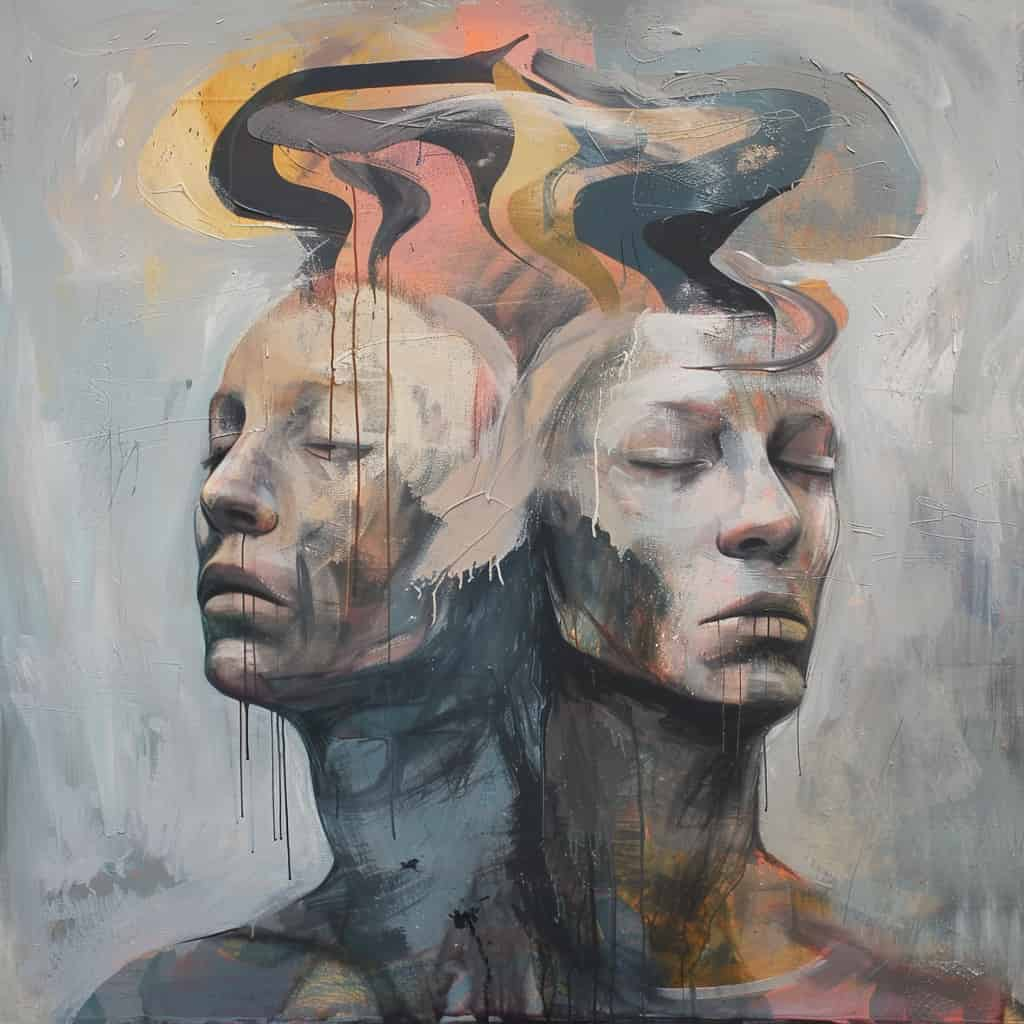Understanding Folie à Deux: Shared Psychosis Explained
Folie à deux, also known as shared psychotic disorder, is a rare and fascinating psychiatric syndrome where delusions are transmitted from one person to another. This condition underscores the complex interplay between individual psychology and social dynamics. In this comprehensive article, we will explore the causes, symptoms, diagnosis, and treatment of folie à deux, providing a thorough understanding of this intriguing disorder.
What is Folie à Deux?
Folie à deux, a French term meaning "madness of two," is a psychiatric syndrome where delusional beliefs are shared by two individuals who are closely related, such as family members, friends, or partners. The disorder was first described in the 19th century by French psychiatrists Charles Lasègue and Jules Falret. It is also referred to as shared psychotic disorder, induced delusional disorder, or psychosis of association.
Causes of Folie à Deux
The exact cause of folie à deux is not fully understood, but several factors are believed to contribute to its development:
1. Close Relationships: The disorder typically occurs between two people who have a close and dependent relationship. The dominant person, known as the "primary," is usually the one who first develops the delusional beliefs, which are then adopted by the "secondary" person.
2. Isolation: Folie à deux often develops in situations where the involved individuals are socially isolated, limiting their exposure to alternative viewpoints that could challenge their delusions.
3. Genetic and Environmental Factors: There may be a genetic predisposition to developing psychiatric disorders, and environmental stressors, such as trauma or significant life changes, can also play a role.
4. Underlying Mental Illness: The primary individual often has a pre-existing mental illness, such as schizophrenia or delusional disorder, which contributes to the development of the shared delusion.
Folie à Deux is a rare psychotic disorder in which two intimately related individuals simultaneously share similar or identical delusions (French, "double insanity"). It is the most common form of shared psychotic disorder. Rarer forms involving more than two intimately related individuals or members of the same family are called folie à trois (a delusion shared by three people), folie à quatre (a delusion shared by four people), and so on. (APA Dictionary of Psychology)
Symptoms of Folie à Deux
The symptoms of folie à deux can vary depending on the nature of the delusional beliefs being shared. Common symptoms include:
1. Delusional Beliefs: Both individuals share the same false beliefs, which are often paranoid or grandiose in nature. For example, they may believe they are being persecuted or have special powers.
2. Behavioral Changes: The delusional beliefs can lead to significant changes in behavior, such as withdrawal from social activities, changes in daily routines, or engaging in unusual or risky activities.
3. Emotional Distress: The individuals may experience intense emotions related to their delusions, such as fear, anger, or sadness.
4. Resistance to Contrary Evidence: Both individuals are often resistant to any evidence that contradicts their delusional beliefs and may become defensive or hostile when confronted.
Diagnosing Folie à Deux
Diagnosing folie à deux can be challenging, as it requires a thorough understanding of the relationship dynamics and the shared nature of the delusions. Key steps in the diagnostic process include:
1. Clinical Assessment: A comprehensive mental health assessment of both individuals is essential to identify the presence of shared delusional beliefs and any underlying psychiatric conditions.
2. History Taking: Gathering detailed information about the relationship, living situation, and any relevant stressors or trauma can provide important context for the diagnosis.
3. Differential Diagnosis: It is important to rule out other psychiatric disorders that may present with similar symptoms, such as schizophrenia, bipolar disorder, or major depressive disorder with psychotic features.
4. Collateral Information: Information from family members, friends, or other sources can help to corroborate the presence of shared delusional beliefs and provide additional insight into the relationship dynamics.
Treatment Options for Folie à Deux
Treating folie à deux involves addressing both the shared delusions and any underlying mental health conditions. Effective treatment strategies include:
1. Separation: Temporarily separating the individuals can help to disrupt the shared delusional beliefs and provide an opportunity for each person to receive individual treatment. Separation should be done carefully and with appropriate support to minimize distress.
2. Medication: Antipsychotic medications can be effective in reducing delusional beliefs and other psychotic symptoms. Both individuals may benefit from medication, particularly if there is an underlying mental illness.
3. Psychotherapy: Individual therapy can help each person to explore and challenge their delusional beliefs, develop healthier coping strategies, and address any underlying psychological issues. Cognitive-behavioral therapy (CBT) is often effective in treating delusional disorders.
4. Family Therapy: In cases where the individuals are family members, family therapy can help to improve communication, address relationship dynamics, and provide support for the entire family.
5. Support Services: Providing access to social support services, such as case management, peer support groups, and community resources, can help to reduce isolation and promote recovery.
Living with Folie à Deux
Living with folie à deux can be challenging, but with appropriate treatment and support, individuals can recover and lead fulfilling lives. Key considerations for living with this condition include:
1. Ongoing Treatment: Regular follow-up with mental health professionals is important to monitor progress, adjust treatment as needed, and provide ongoing support.
2. Building a Support Network: Developing a strong support network of family, friends, and mental health professionals can provide emotional support and help to prevent relapse.
3. Education and Awareness: Educating individuals and their families about the nature of folie à deux and the importance of treatment can help to reduce stigma and promote understanding.
4. Self-Care: Encouraging individuals to engage in self-care activities, such as regular exercise, healthy eating, and stress management, can support overall well-being and recovery.
Summary
Folie à deux, or shared psychotic disorder, is a rare psychiatric syndrome where delusional beliefs are transmitted from one person to another. The disorder often occurs between individuals with a close, dependent relationship and can be influenced by factors such as isolation, genetic predisposition, and underlying mental illness. Symptoms include shared delusional beliefs, behavioral changes, emotional distress, and resistance to contrary evidence.
Diagnosis involves a thorough clinical assessment, history taking, differential diagnosis, and gathering collateral information. Treatment strategies include separation, medication, psychotherapy, family therapy, and support services. With appropriate treatment and support, individuals can recover and lead fulfilling lives.
For further information on this fascinating topic, check out the following references:
Recent Articles
-
Psychology Articles by David Webb
Dec 16, 25 08:52 AM
Discover psychology articles by David Webb, featuring science-based insights into why we think, feel, and behave the way we do. -
Hedonic Adaptation Explained: Why Familiar Pleasures Lose Their Spark
Dec 16, 25 08:40 AM
Hedonic adaptation explains why pleasures fade over time. Learn how small changes can restore enjoyment and why popcorn tastes better with chopsticks. -
Schadenfreude Explained: Why We Enjoy Others’ Missteps
Dec 14, 25 04:54 AM
Schadenfreude explains why we sometimes enjoy others’ misfortunes. Explore the psychology behind this emotion, from social comparison to moral judgment.
Please help support this website by visiting the All About Psychology Amazon Store to check out an awesome collection of psychology books, gifts and T-shirts.
Know someone who would be interested in reading Understanding Folie à Deux: Shared Psychosis Explained?
Share This Page With Them.
Go From 'Understanding Folie à Deux: Shared Psychosis Explained' Back To The Home Page





